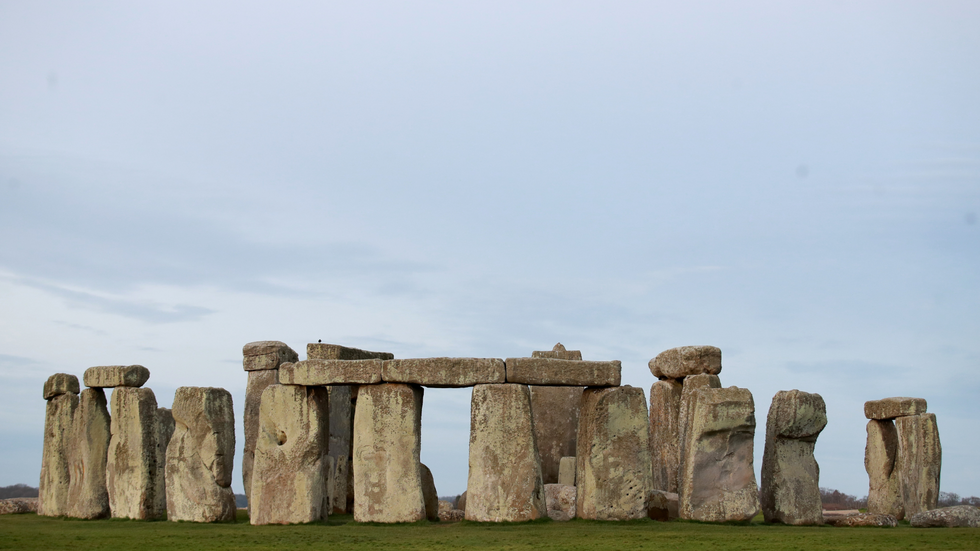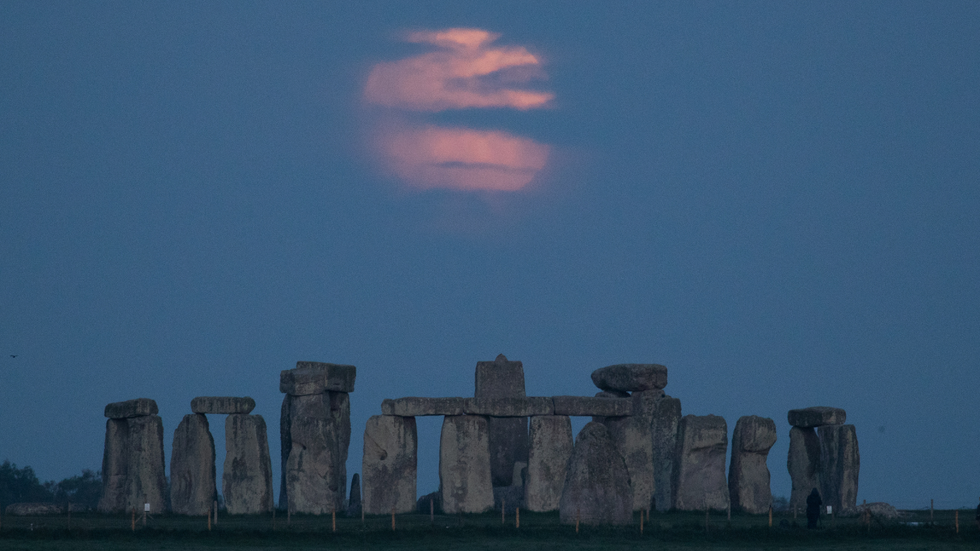New proof has been found behind the origins of Stonehenge.
A cow's tooth from a jawbone positioned on the entrance to the monument almost 5,000 years in the past suggests the stones have been introduced some 125 miles from Wales to Salisbury Plain.
Scientific evaluation of the molar tooth confirmed the animal was born in Wales, supporting the idea that cows have been used to maneuver the large stones throughout the nation.
**ARE YOU READING THIS ON OUR APP? DOWNLOAD NOW FOR THE BEST GB NEWS EXPERIENCE**
The jawbone was first found a century in the past – nonetheless, scientists had beforehand been unable to find out its place of birth, or why it had been positioned there.
However after wanting into the chemical make-up of the cow's tooth, scientists suppose they’ve a solution.
A workforce from the British Geological Survey (BGS), Cardiff College and College Faculty London have been capable of observe lead isotopes within the bovine molar to a degree of origin.
Professor Jane Evans, a BGS honorary analysis affiliate, stated: "It tells us that very early in its life it integrated lead into its skeleton and that lead was from previous Palaeozoic rocks, older than about 400 million years previous.

"These forms of rocks crop up primarily in Britain in Wales, which is the closest provide, and likewise within the Lake District and Scotland.
"That means this animal, present in Wiltshire, didn't begin life in that sort of space.
"It should have been grazing at a while on older rocks, and the plain conclusion, given its Stonehenge, is that Wales is the possible origin of the cow's formative years."
Professor Evans added: "The jawbone was positioned in a really particular a part of the earliest ring construction of Stonehenge, which means it was some sort of ritual, archaeologists will say.
RECENT ARCHAEOLOGY BREAKTHROUGHS:
- 'Proof of medieval England's numerous inhabitants' discovered at 1,300-year-old burial websites
- New Easter Island statue 'emerges from lake' as scientists left shocked
- Archaeologists reveal web site the place Lord Nelson's fleet was constructed and launched

"So the query is, why? And then you definitely come to the query: has this animal include the individuals who have been concerned within the transportation of the stones, or at the least the earliest migrations of the folks bringing the stones, from Wales to England."
Archaeologists had beforehand discovered no proof to point out that cows have been used as beasts of burden in Neolithic occasions.
Nonetheless, a latest paper advised some cow's ft have a construction which signifies this might have been the case.
Professor Evans stated: "It feeds into that narrative fairly nicely."
If cows weren’t used, it’s thought oxen could have been.
Professor Evans added: "I don't know the way lengthy it takes to tug stones from Wales to Stonehenge, however you want to have the ability to feed your self and so it's going to be an enormous course of.
"You’ve got to have an enormous help community to do it."
Evaluation of carbon isotopes confirmed that the cow's food plan modified with the seasons, that means both the cow moved seasonally or that winter feed was introduced in.
Though the cow's jaw was discovered at Stonehenge, researchers are not sure whether or not it travelled to the location alive, or if its stays have been simply buried there.
Professor of British later prehistory at UCL, Michael Parker Pearson, stated it was "but extra fascinating proof for Stonehenge's hyperlink with southwest Wales" and raised "the tantalising risk that cattle helped to haul the stones".
Richard Madgwick, a Professor of archaeological science at Cardiff, stated: "It supplies unparalleled new element on the distant origins of the animal and the arduous journey it was introduced on.
"So typically grand narratives dominate analysis on main archaeological websites, however this detailed biographical method on a single animal supplies a brand-new aspect to the story of Stonehenge."
